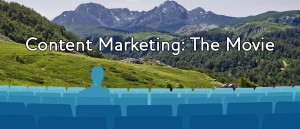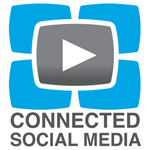Content Marketing: Instilling An Audience-Centric Culture
Creating media and posting it on the web is easy. Creating media to attract and hold someone’s attention is difficult.
It starts with knowing what people want. We know what people want, right? We know good content when we see it. If we like it then other people will, too.
Well, no.
Figure Out What Makes Them Dance
Leo Hindery, a legend in the TV business, once told me in an interview about the state of video on the web, “People think they are experts in what a good production is because they watch TV. They are experts. They’re experts in what they like. But they aren’t experts in what I like or you like or anyone else until they ask.”
Hollywood learned a long time ago there is an inherent disconnection between creators and audience – the gut instincts of movie executives and producers to predict box office success weren’t reliable enough. By the time The Wizard of Oz and Gone with the Wind were made in the 1930s, movies were being tested in front of preview audiences. Today, testing and research has become a part of media culture in movie studios, broadcasting, cable, the music industry and even on Broadway.
For movie producers, radio and TV program directors, or music label marketers personal taste is essentially irrelevant. Songs, shows, movies, news programs and such are just product: like cheese, Frisbees or shoes. This is not to suggest media professionals don’t appreciate art. It’s show business. And whatever you are creating, whether it’s an avant-garde production of Mozart’s Don Giovanni or a one minute promo video for a mom & pops web page, if you are making media with the intention of attracting an audience you are in show biz, kid.
Time and again those who’ve learned how to make a living in media, preach being audience-centric (identify audience then make media). Guitarist and music business mentor Tom Hess implores new musicians to forget iconoclastic illusions. He writes that the first thing you need to do is “find and identify the people who you will give value to.” And in a book that explores more than the title suggests, How to DJ Right, Frank Broughton and Bill Brewster assert, “The whole point of DJing is that you interact with the people on the dance floor… your job is to get inside their heads and figure out what makes them dance.”
Can’t Afford Free Anymore
As journalist Tom Foremski observed every company is a media company. At first glance that obviously means any company creating media on the web, in order to be successful, must produce well made content.
Let me take you back where the sausage is made. The primary function of a media company is not to make content. Granted, media companies spend a significant portion of their resources on creation. They hire lots of creative people to produce text, images and sound. But regardless of these activities, without revenue the company would fail. A media company’s raison d’être is to sell an audience’s attention to advertisers or sell the content directly to an audience.
But let’s examine a non-media company like a maker of widgets. It wants to get its widget message out to as many people as possible. So, the company’s marketing department, armed with a shiny new website, makes content about widgets and then seeks people to read, watch or listen to it. This is a content-centric model: make media then find an audience.
There’s no need to sell advertising or charge a fee to the audience, because the company makes its money selling widgets. It finds out what the market needs and then manufactures widgets to fulfill that need. Why should it apply this business model to its media creation? The cost to make it is modest. With direct access to millions of people over the Internet and with a cheap microphone or camera the widget-maker can theoretically upload an unlimited amount of content.
Well, about eight years ago the mere process of making a video and uploading it was a great result in itself. It was free. However, through trial and error many marketers have realized they can’t afford free without an audience. Marketers are moving, some more quickly than others, toward being audience-centric. They eschew making media from their personal tastes or assumptions, but instead identify their target audience and “ask” the audience what it wants before ever turning on a microphone.
The web is full of content-centric media looking for an audience. Most of it is noise. But with a shift to an audience-centric model — i.e., treating content creation like a business — marketers can reach more people with media that’s actually valuable and builds brand awareness. In many organizations the shift from content-centric to audience-centric will require a cultural change, perhaps even a tectonic one.
###



